Ignac Sustala and Adolf Raska
The foundations of Tatra were laid in the Northern Moravian village of Nesselsdorf by a pair of enterprising carpenters and wheelwrights, Ignac Sustala and Adolf Raska who established the original coach and cart manufacturing business in 1849. Three years later they were able to build a small factory, and by 1856 sales had become sufficiently brisk for the establishment of a branch in Lwow.
Tatra Neutischeinek Buggies
Another branch followed in Ratibor, Prussia, in 1864, and retail premises in Wroclaw, Vienna, Prague and Berlin. The firm became known in the 1860s for its Neutischeinek buggies, and the production of open and closed luxury coaches. Through the 1870s the firm earned awards in several important industrial exhibitions. Construction of the Nesselsdorf factory was completed, and by 1880 it employed 150 workers and produced 1200 vehicles a year.
The Studenky-Stramberk Railway
The construction of the Studenky-Stramberk railway line in 1882 opened a new chapter for the firm. The call for railway carriages provoked considerable extension of the factory, including a bigger forging shop and a new assembly area with a carpentry and cabinet-makers section. In 1891 the enterprise was turned into a joint stock company, with a working capital of two million Austrian crowns.
Hugo Fischer and Baron von Liebig
The company then moved into motor manufacture in 1897 through the combined enthusiasm of factory general manager Hugo Fischer, and local motoring pioneer, Baron von Liebig. A new company, Nesselsdorf, was established with offices in Vienna, and the Austro-Hungarian Empire's first motor car, the President, was designed around a 5 hp Benz flat-twin engine. It covered the 320 kilometers from Nesselsdorf to Vienna in May 1898 to appear at an exhibition there, the journey taking, 14
½ hours.
One of the engineers involved in the President design was
Edmund Rumpler, who was later associated with
Adler and who, after World War 1, built cars under his own name. In the same year the factory began work on the prototype of a two-ton truck, powered by a flat-four engine with a three-speed gearbox and a maximum speed of 20 kph. Also involved in the design of Central Europe's first car was Hans Ledwinka, soon to become one of the great names in early car development.
The Nesselsdorf President, Meteor and Spitzbub
The President, of which ten were built with pneumatic tyres and chain drive to the countershaft, was followed in 1899 by the Meteor with a twin-cylinder 6 hp engine, and then by the Spitzbub model. The turn of the century saw a new Nesselsdorf car similar to the previous models, but in that same year the decision was taken to build the firm's own engine. Because the factory did not have the capacity to produce engines, this task was given to the Viennese firm of William Hardy, and Nesselsdorf engines were produced from 1900. In the same year, a pure racing car was designed by Ledwinka with Von Liebig's continued support around a twin-cylinder 12 hp Benz engine and four-speed gearbox, With a top speed of 112 kph the car was successful, von Liebig winning the Nice-La Turbie race of 1900, and taking second place in the Salzburg-Linz-Vienna event. The car also contested the Paris-Vienna and Gordon Bennett races.
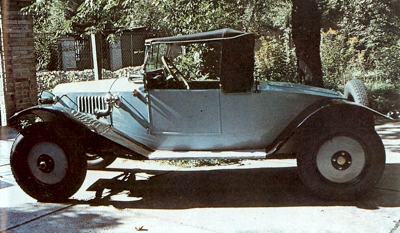 1926 Tatra 17/31, which was manufactured to 1931.
1926 Tatra 17/31, which was manufactured to 1931.
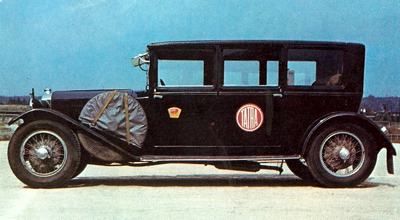 1923 Tatra 11 Saloon.
1923 Tatra 11 Saloon.
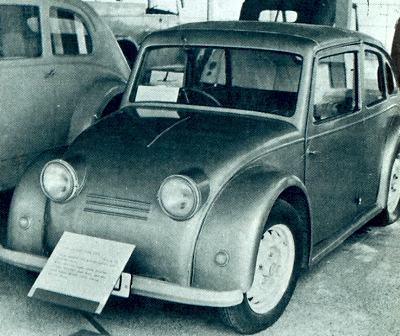 1933 Tatra V370 Prototype, which was powered by a twin-cylinder engine.
1933 Tatra V370 Prototype, which was powered by a twin-cylinder engine.
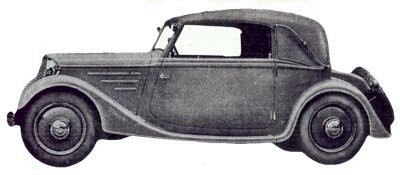 1934 Tatra 54 two-door convertible, powered by a 1484cc 12 hp air-cooled engine.
1934 Tatra 54 two-door convertible, powered by a 1484cc 12 hp air-cooled engine.
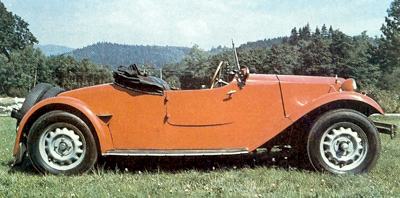 1935 Tatra 57 two-seater sports.
1935 Tatra 57 two-seater sports.
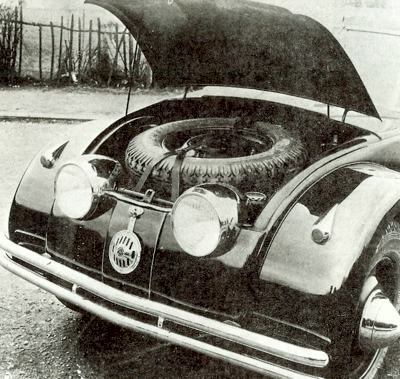 Front view of the Ledwinka designed Tatra 77.
Front view of the Ledwinka designed Tatra 77.
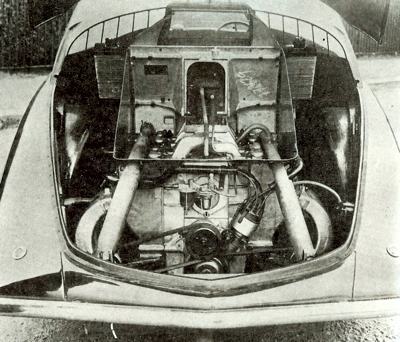 Rear view of the Ledwinka designed Tatra 77.
Rear view of the Ledwinka designed Tatra 77.
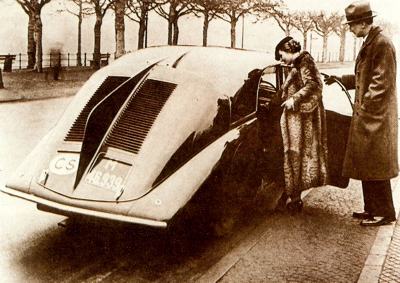 Another rear view of the beautiful Tatra 77, the worlds first all-enveloping streamlined sedan body. The 77 was followed by the 77A, the 87 and then the 97 models.
Another rear view of the beautiful Tatra 77, the worlds first all-enveloping streamlined sedan body. The 77 was followed by the 77A, the 87 and then the 97 models.
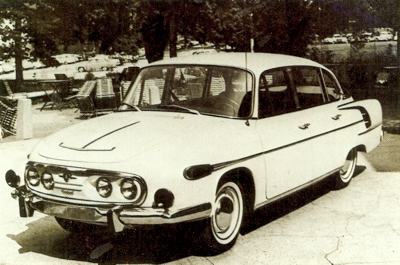 1968 Tatra T603.
1968 Tatra T603.
|
The Glockengetriebe
A prototype bus and an experimental electric car were also built. The Nesselsdorf car of 1900 was similar in design to earlier cars, but a year later the engine was placed under the chassis and the old carriage-style body was dropped. Three types were available with 8 hp, 12 hp and four-cylinder 24 hp engines, but were not particularly successful. Ledwinka, who had quit Nesselsdorf for a brief period to work on steam cars with Friedmann in Vienna, was brought back to reorganise the Nesselsdorf car division and to design new models. In 1906 his successful S Type was produced and established the firm's reputation world-wide as a car maker. It had a 3.3-liter four-cylinder engine with the cylinders cast in pairs and a vertically driven overhead camshaft arrangement, known as the Glockengetriebe. Rear axle drive was through a Cardan shaft and a transmission with two gear rings in the case and three gear wheels to provide four forward speeds and a reverse.
The succeeding T type used a mono bloc engine, as did the six-cylinder U40/50PS and U40/65PS cars which followed. All had a proper chassis and cartspring suspension with engine and transmission located in what was to become the conventional position, as opposed to the tip-off body, axle-mounted engine and twin rear chain drive of the earlier cars. The T and U types were produced around the beginning of World War 1, the top 65 hp six-cylinder car having the innovation of four-wheel braking. The Nesselsdorf car division produced many T type cars for military use during this period, though an exclusive model with 20/30 hp engine was built for the Emperor of Austria in 1915.
Koprivnice Vozovka A.S.
The division also manufactured TL2 two-ton trucks of 35 hp utilising S and T type car transmissions with very little modification. Production was not huge - in 1915 only 105 trucks were produced - but it was growing quickly, with 226 in 1916 and 342 in 1917, by which time the factory employed 2,500 people. A TL4 four-ton truck was introduced during this period. The end of World War 1 found Nesselsdorf within the boundaries of the new independent state of Czechoslovakia, and renamed Koprivnice, and in 1920 the old Nesselsdorfer Wagenbau firm became Koprivnice Vozovka A.S.
Brake Testing in the Tatra Mountains
Test runs to prove a new design of braking for Nesselsdorf trucks had been taking place in the High Tatra mountains, and the Tatra name was adopted. By 1920 the last NW badge (for Nesselsdorfer Wagenbau) had given way to the Tatra trade mark. Ledwinka, who had worked for Steyr during the war, returned to his old firm and set about designing an everyman's car for Tatra, foreseeing the increasingly limited market for the large, complex and luxurious car of the pre-war days. His new model, the Tatra T-11, was designed for long life, ease of maintenance, and low fuel consumption, and this car turned out to be one of the classics of automobile design.
Presented in public for the first time at the Prague Motor Show of 1923, the Tatra T-11 had an air-cooled 1056cc two-cylinder engine producing 12 hp, rigidly connected to the clutch housing and thence the transmission housing. The car had a backbone tubular frame and featured rear swing axles, differential, and independent suspension all round. This concept put Tatra ahead of most car firms of the day in terms of design, and was the basis of subsequent Tatra cars and commercial vehicles. The Tatra II was not designed as a competition car, but the soundness of the basic design made it suitable for racing and hill-climbing compared with most of the older designs still in use.
The Leningrad-Tiflis-Moscow Long-Distance Race
In 1924 works driver Vermirovsky swept the board with this model at the Solitude hillclimb, near Stuttgart. The following year the cars took first and second class places in the Targa Florio, driven by Fritz Huckel and Karl Sponer. These were standard production cars with the exception of swinging half axles in place of leaf springs at the front, and twin inlet valves instead of single valves. Vermirovsky scored another victory in the same year, winning the Leningrad-Tiflis-Moscow long-distance race of 5300 kilometres. He was the only driver to arrive without a penalty point, and was awarded an extra prize for the durability and economy of his car.
The name Tatra was becoming so well known that in 1927 the management decided to change the factory name from Koprivnice Vozovka A.S. to Zavody Tatra A.S. (Tatra Works Ltd). At this point it was recorded that the various units of the company had produced 150,000 carts and coaches, 50,000 railway carriages and wagons, and 8000 cars and trucks. Current production capacity was 400 carriages and 4000 rolling stock for the railways, and up to 4000 cars. There were 3000 manual workers and 300 administrative staff. Up to 1930 the form produced about 25,000 Tatra 11 and Tatra 12 models, the latter being similar to the 11 but with four-wheel brakes.
The Tatra Hadimrska, Rohr Junior and Austro-Tatra
A number of four-cylinder models followed, designed on similar lines to the T-11 with air-cooled opposing twin cylinder engines, tubular backbone and swing axles: the 30 with 1680cc 40 hp, the 52 with 1910cc 40hp engine, and the more significant 57 of 1932 with a flat-four engine of 1160cc developing 22 hp, known as the Hadimrska. Variations of this lightweight model were produced by Tatra up until 1940, and it appeared in Germany as the Rohr Junior and in Vienna as the Austro-Tatra, both versions being built under licence. At this time Tatra also produced an in-line six-cylinder Type 70 of 3400cc producing 60 hp, and a big six-liter V12 Type 80 giving 100 hp. At the other extreme, a little 528cc three-wheeler Type 49 was tried, but few of these little cars were produced.
The World's First Streamliner
Ledwinka's next major contribution to Tatra's reputation, designed in collaboration with another Tatra engineer, Ubelacker, was the Type 77 of 1934 - the world's first all-enveloping streamlined body. The car had a central box-frame which forked behind the rear axle to hold a 3400 cc V8 air-coole d engine developing 70 hp and giving the 77 a top speed of 95 mph. The Tatra 77A and 87 models which followed modified and improved the design. The 87 was significant - though the engine size was reduced to 2960cc it put out 75 hp and gave the car a 100 mph top speed because of weight reduction in the design. In the same year that the 87 was introduced (1937), a four-cylinder version was offered - the Type 97, with a flat-four unit of 1760 cc.
After the 1938 invasion of Czechoslovakia by Nazi Germany, Tatras continued in production, largely because Germans liked the cars. Many German officers met their deaths driving heavy, rear-engined Tatras faster around corners than they could handle. At the time, as an anecdote, Tatra became known as the 'Czech Secret Weapon' for the scores of officers who died behind the wheel; at one point official orders were issued forbidding German officers from driving Tatras. But with Koprivnice under German occupation, model policy was restricted and the 97 was discontinued. The Type 87 continued in production until 1941. The firm was also developing trucks at this time, the three-ton T27 and T27B being manufactured from 1936. A six-and-a-half-ton T81 with three driven axles and a 120/150 hp eight-cylinder water-cooled engine was produced in 1939. Eight and ten-ton trucks based on this followed in 1942, the latter having a 12-cylinder air-cooled diesel unit. Subsequently nearly 15,000 of these vehicles were exported to a total of 59 countries.
The Tatraplan T600
After World War 2 the Tatra works were nationalised in by the Czech government, and car production was concentrated on two types, the old front-engined 57B four-cylinder model and the rear-engined 87 eight-cylinder, though Tatra's main immediate post-war task was to replace the 60,000 railway waggons and carriages lost by Czechoslovakia. But the firm was still the country's biggest car and truck maker, accounting for 46 per cent of car production in 1946 and 1947 and employing over 5000 workers. A new passenger car was introduced in 1948 to replace the 57B and 87 - the Tatraplan T600, based on the pre-war 97 but with a two-liter engine mounted in the rear. Production of this car was transferred in 1951 from Koprivnice to the firm's AZNP Mlada Boleslav factory, in order to make way for the manufacture of T128 and T111 R trucks in quantity. (Production of railway rolling stock also ceased in the same year for the same reason.)
In 1958 came a new T805 one-and-a-half-ton truck with air-cooled eight-cylinder engine below the driver's cab. The following year the T138 was added, powered by an air-cooled V8 engine producing 192 hp, with swing axles, pneumatic gearchange and more than twenty body alternatives. From 1964 to 1966 truck production increased by 60 per cent, and around one third of Tatra production is exported. 1966 saw a new type, the T813 three-axle tipper truck with 250 hp unit, from which was developed a four-axle truck with tyres whose pressure could be varied while the vehicle was running.
The Tatra T603
The two trucks had identical components and were designed for off-road work. A towing tractor unit, the T141, and a T805 off-road utility one-and-a-half-tonner were also introduced. The Tatraplan car continued in production until 1952, after which there was a three year period in which no private cars at all were made by Tatra. But the design staff were working on a new project and in 1955 Tatra started making cars again. These reached the home market in quantity from 1957. The new model was the T603, with an air-cooled V8 engine of 2472cc mounted in the rear. Floorpan design was for the first time flat, and a new helical spring suspension gave a much improved ride compared with earlier cars.
The Tatra T613
The Tatra T603 remained in production until 1973 in T3-603 form with twin-carburetor engine, servo-assisted brakes and power-assisted steering. A further development, the T613, followed the same year. The T613 was, once more, rear engined. Its air-cooled V8 of 3459cc gave it good performance, around 115 mph in top, although at the expense of good fuel consumption. With features such as light-alloy cylinder heads, double overhead cams, rack-and-pinion steering, and servoed disc brakes, the Tatra T613 was easily the most sophisticated East European car of the 1970s, Tatra relying on native design and development talent, rather than the imported technical expertise of Fiat which boosted the Polish and Russian car industries.
Although the layout remained the same, the body was all new, as was the engine, being equipped with four overhead camshafts, a higher capacity (3495 cc) and an output close to 165 bhp (123 kW; 167 PS). In addition, it had been moved somewhat forward for improved balance. These cars were built in five series and several modifications until 1996. It is a tribute to Vignale's styling that they did not look dated until rather late in that time period. Over 11,000 cars were built, slowing to a trickle of but a few dozen a year towards the end as Tatras began to seem more and more outdated.
The Tatra T700
The Tatra T700 was a large luxury car released in 1996 by Tatra, essentially a heavily restyled version of the Tatra T613 model it replaced. The T700 was offered as both a sedan and coupé with either a 3.5 or 4.4 liter 90° air-cooled V8 petrol engine. The model was not successful nor produced in large numbers, and production halted in 1999; the Tatra T700 was the last passenger car made by Tatra, which then concentrated on commercial vehicles.
